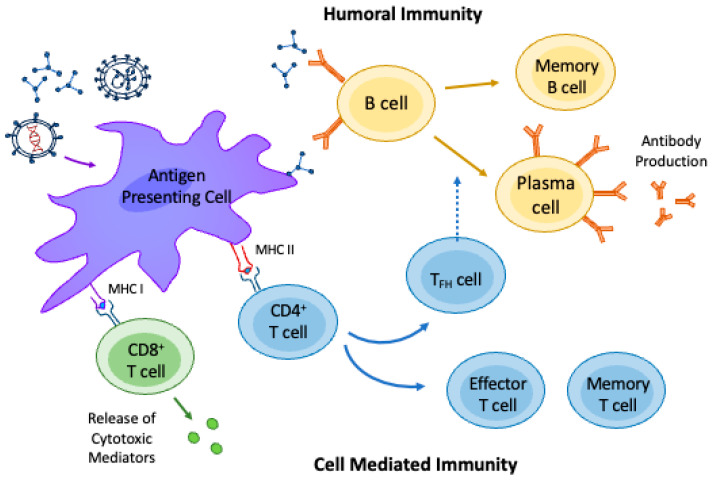Figure 1.
Immune response to vaccination. Once administered, the vaccine particles are phagocytosed by the innate immune system’s antigen-presenting cells (APCs). These cells process the engulfed particles and subsequently present the antigens to adaptive immune system cells. The presentation of antigens by APCs depends on the type of vaccine-incorporated components (i.e., protein subunit with or without a protein-bound adjuvant, viral DNA or mRNA vaccine, viral particles, viral or bacterial live attenuated vaccines, etc.). In general, viral antigens are presented on major histocompatibility complex type (MHC)-1 peptides to cytotoxic CD8+ T cells to activate cell-mediated immunity and viral host defense through the release of cytotoxic mediators (mainly perforin and granzyme). Bacterial and parasitic antigens are presented on MHC-2 peptides to CD4+ T cells that stimulate effector and memory T cell responses. Follicular T cells (TFH cells) aid in B cell activation and differentiation into plasma cells, which produce antigen-specific high-affinity antibodies. B cell activation may also be independent of T cells through direct interaction with the vaccine particles or through interaction with an APC. The inherent function of the APCs, T cells, and B cells involved in the immune response to vaccine may be altered by the presence of AIIRDs and the use of immunosuppressive therapy.

